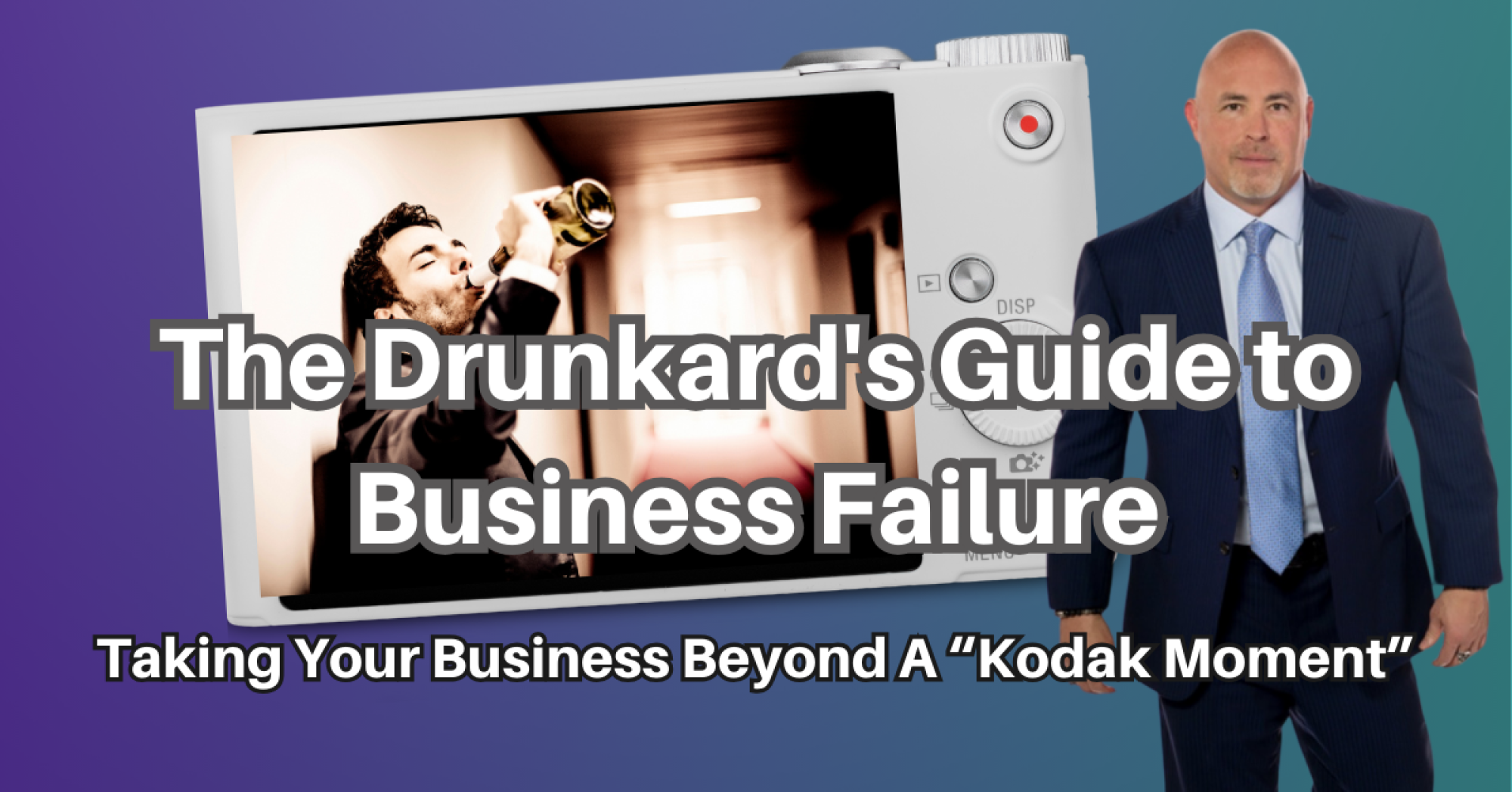
The Drunk’s Guide to Business Failure: Taking Your Business Beyond A “Kodak Moment”
The Drunk’s Guide to Business Failure
There’s an old story about a drunk stumbling through a dark alley, desperately searching for his lost keys. He shines his flashlight around, peering intently at the ground, muttering to himself. Finally, a policeman approaches and asks, “What seems to be the trouble?”
“I lost my keys!” the drunk exclaims, his voice thick with frustration.
The policeman joins the search, but after several fruitless minutes, he asks, “Are you sure you lost them here?”
The man hesitates, then sheepishly admits, “Well, no, I actually think I dropped them back in the park, across the street.”
The policeman stares, bewildered. “Then why are you looking for them here?” he asks, gesturing at the alleyway lit by a streetlight.
“Because this is where the light is,” the man replies with a shrug.
This is the drunk’s search principle.
It perfectly captures the fatal flaw that can bring even the most successful companies crashing down: focusing on the easy solutions instead of addressing the real problems, even when they are staring you in the face.
How Kodak Became a Victim of Its Own Success
It was 1975 when a young electrical engineer at Kodak named Steven Sasson was tasked by his supervisor, Gareth A. Lloyd, with an ambitious project: to explore the potential of creating an electronic camera using a commercially available charge-coupled device (CCD).
Little did they know that this assignment would set in motion a technological revolution that Kodak itself would struggle to embrace.
With determination and ingenuity, Sasson crafted a pioneering prototype – a bulky, 8-pound contraption that captured black-and-white images with a resolution of just 0.01 megapixels. While primitive by today’s standards, this first self-contained digital camera marked a groundbreaking moment in photography’s evolution.
A Pioneering Invention Ignored
Kodak, however, remained entrenched in its film-based empire, basking in the glory of its dominance and the profits that flowed from it. Like a drunk desperately seeking lost keys under the comforting beam of a streetlight, Kodak persistently looked for new opportunities within the confines of its existing film empire.
The company poured resources into refining and optimizing its traditional products, blinded by the belief that the demand for film would endure indefinitely.
While competitors like Sony, Canon, and Fuji eagerly ventured into the uncharted territory of digital imaging, Kodak stubbornly clung to the fading light of its analog past. The company’s reluctance to stray from its well-trodden path left it ill-prepared for the seismic shift that was reshaping the photography landscape.
By the time Kodak realized the folly of its ways and attempted to play catch-up in the digital camera market, it was too late. The drunk had squandered precious time searching under the wrong streetlight, while the real treasure – the future of photography – had already been seized by those willing to venture into the unknown.
The once-iconic brand that had defined the art of capturing memories found itself relegated to the shadows, a cautionary tale of how even industry titans can stumble and fall when they become too enamored with the familiar light.
The story of Kodak is a stark reminder that ignoring the future is a recipe for disaster. Clinging to the past and focusing on the easy solutions under the familiar streetlight will not help you navigate the dark alleys of business change.
Like a drunk stubbornly searching for lost keys under a streetlight, Kodak remained fixated on its traditional film business, even as the digital photography revolution was unfolding around them.

Learning from the Drunk: Key Principles for Sustainable Business Growth
Kodak’s downfall serves as a cautionary tale, highlighting the perils of complacency and the importance of adaptability in today’s rapidly changing business landscape. To avoid the drunkard’s fate and build a sustainable future for your business, you must embrace the following principles:
- Embrace innovation: Don’t be afraid to explore new technologies and trends, even if they seem to contradict your existing business model. Innovation is the lifeblood of any successful enterprise and those who fail to embrace it risk being left behind.
- Be adaptable: Be prepared to pivot and adjust your strategies as market conditions and customer preferences evolve. Rigidity and an unwillingness to change are often the precursors to obsolescence.
- Encourage critical thinking: Foster a culture of open discussions and exploration to identify potential threats and opportunities. Encourage your team to question assumptions and challenge the status quo, lest you become blind to the risks on the horizon.
- Learn from others’ mistakes: Study past business failures like Kodak to avoid repeating their mistakes. The lessons of history can be invaluable guides as you navigate the uncertainties of the future.
Cultivate a culture of innovation and adaptability, one that encourages critical thinking and a willingness to explore new frontiers.
Only by venturing beyond the comforting glow of the streetlight and into the darkness of the unknown can you truly uncover the opportunities that will shape the future of your business.
In today’s rapidly evolving marketplace, complacency is a death sentence.
Embrace change, anticipate disruptions, and be willing to pivot when necessary.
By doing so, you’ll not only avoid the drunkard’s fate but also position your organization for long-term growth and success in an ever-changing business world.